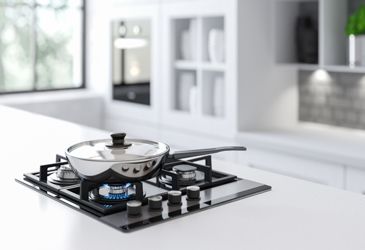Millions of Americans are being exposed to dangerous pollutants every time they turn on their gas stove. That’s according to a report just published by Rocky Mountain Institute.
Around 40% of Americans use a gas stove for cooking. Without adequate ventilation, they can emit dangerously high levels of Nitrogen Dioxide (NO2) and are the primary source of pollution in the home. One study, carried out by scientists from the University of Texas, found that when cooking a Thanksgiving meal, pollution levels exceeded one of the most polluted cities in the world, New Delhi in India.
Children are more vulnerable than adults
Exposure to NO2 causes a wide range of health problems across all ages. However this report focuses on the dangers for children in particular. Young children breathe faster, which together with their undeveloped respiratory systems, makes them more vulnerable than adults. According to the report, a child’s chances of developing asthma is increased by up to 42% if they live in a home with a gas stove.
Change is possible
Perhaps one of the greatest lessons we have learned over the last few months is that, if needed, change on a grand scale is possible. Governments all over the world have implemented extreme measures to stop the spread of COVID-19. If we want to protect the health of our children and reduce their exposure to pollutants in the home, it is within our reach. According to one report for UCLA, if gas stoves were replaced with electric in all homes in California, $3.5 billion could be saved in healthcare costs.
Austin Air, the only clinically proven air purifiers
Austin Air Purifiers are clinically proven to remove a wide range of pollutants, including those from gas stoves. In 2009 we were approached by the renowned Johns Hopkins University Hospital in Baltimore, to measure how effectively our air purifiers could remove NO2 in homes with gas stoves. The results were impressive, running an Austin dramatically reduced levels of NO2 and significantly improved indoor air quality.
As we learn to live with social distancing, we’re spending much more time at home. More than ever, it’s time to make indoor air quality a priority. If you’d like to learn more about the Austin Air Purifier used in the Johns Hopkins study, click here.
